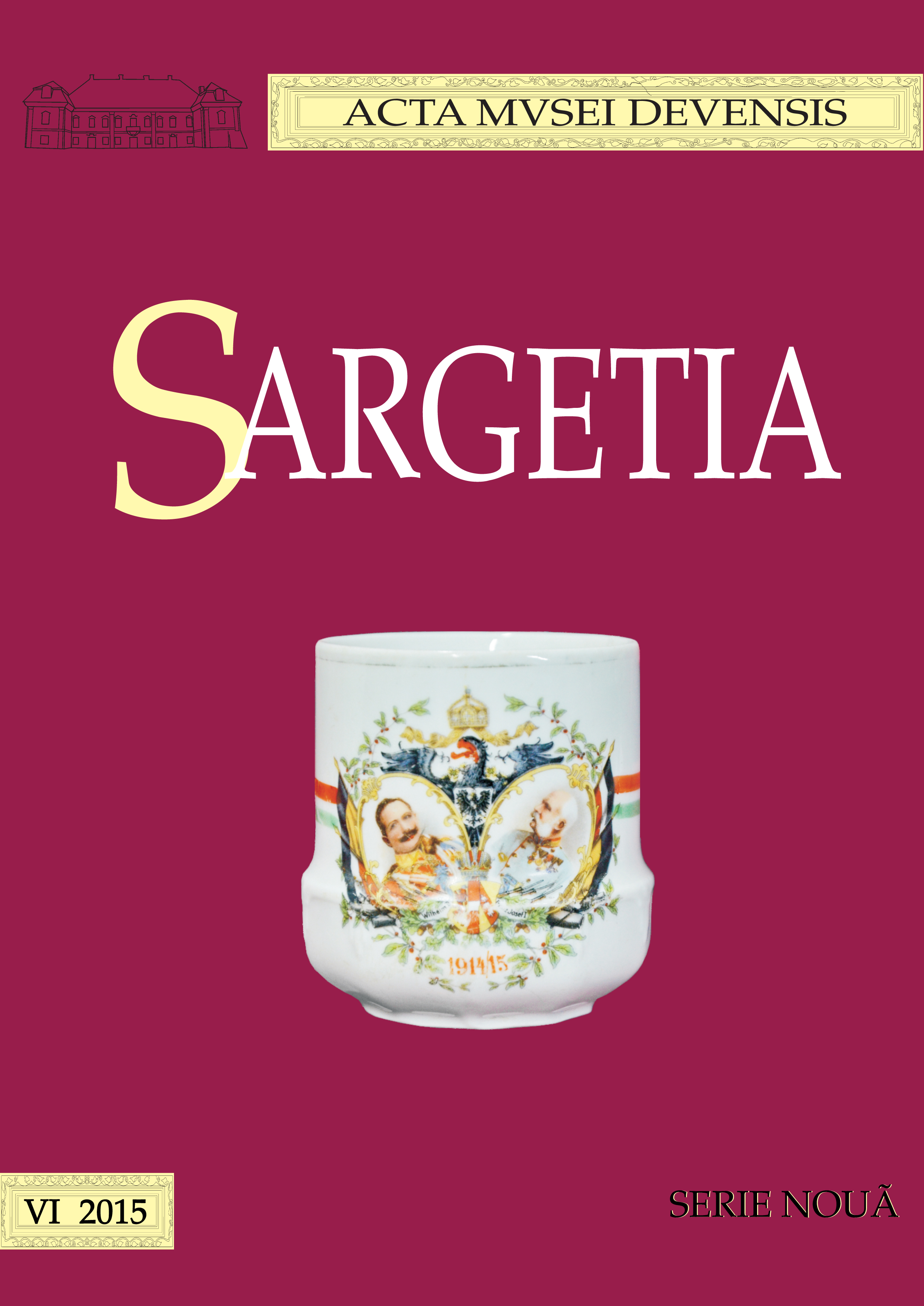Un complex La Tène descoperit la Tărtăria
A La Tène Structure Found at Tărtăria
Author(s): Iosif Vasile Ferencz, Cristian-Constantin RomanSubject(s): Archaeology
Published by: Editura Altip
Keywords: La Tène; Mureş Valley; Tărtăria; pit house; rescue excavations
Summary/Abstract: The investments in the Romanian transportation infrastructure determine the organisation of certain archaeological investigations aimed to preserve the archaeological artefacts. One such investigation was conducted in October-December of 2014, on the occasion of modernisation of the railway on the Pan-European corridor IV (Fig. 1).One of the sites investigated by a team from the Dacian and Roman Civilization Museum of Deva provided diverse findings from multiple ages: Neolithic (Criş Culture), Eneolithic (Coţofeni Culture), Second Iron Age (La Tène and Dacians) and the Middle Ages. The site is located a place called Pietroşiţa, on the Tărtăria village lands, Sălişte Commune, Alba County (Fig. 2).Geographically, the site is on the middle flow of the Mureş river, specifically its left, approximately 850 m South-East of the southern bank, on a terrace averaging 215 m high, about 1 km East of Tărtăria Creek (Fig. 2).When the complex was delimited, it appeared as two relatively oval stains with different sizes, clearly distinct in a layer of clay, without archaeological materials outside the contour described above. For this reason we initially thought there were two complexes. While investigating in the field and later, during the ceramics' analysis it transpired that there were two distinct types of filling within the same complex.By axes, the complex measures 5,5 m North to South and 3,66 m East to West, with the greatest contouring depth of 1,49 m, though, measured from the ancient stepping level it must have been a few cm deeper.During excavation, a consistent layer of ash mixed with clay took shape, suggesting, even from the investigation's outset, a rapid fill-up of at least part of the complex. Sectioning the site on the North-West – South-East axis offered a representative image of the anthropic accumulations (Fig. 5-6).We believe that the entire filling material provenience is from the places around the structure where it was accumulated in the time when the structure were used. Such an interpretation can explain the high degree of ceramic fragmentation in the complex and the links between ceramic fragments from different layers of the complex.Generically, the components of the interior space of the complex were delimited by their volume, aspect, depth and functionality (as suggested or intuited by us), thus: C5.2 was most likely a living space, C5.1 was, we believe, a storage space and for daily activities, with access to the south. We believe C5.3 was a storage space (Fig. 7-8).To establish the chronology of recent discoveries from Tărtăria – Pietroşiţa based only on shards is a difficult endeavour. The stations located nearby have provided some artefacts that can be dated within a restricted period of time. These include two bronze fibulae, three fragments of glass bracelets and a bit of iron from Şeuşa and the well known pot with anthropomorphic handles from Blandiana indicating La Tène C1 as classification date for the stations in question. Out of those two stations mentioned, Şeuşa and Blandiana, the latter is situated at small distance from Tărtăria (about 1400 m). However, neither the proximity to other settlements better chronologically classified (as the one from Şeuşa), nor the fact that the dwelling was abandoned or that the ceramic fragments have analogies in the area are not sufficient arguments to propose a certain date for filling-up the complex C5 from Tărtăria.La Tène civilisation characterising the so called „Celtic Horizon” is identified in the intra-carpathic space and implicitly on the middle flow of Mureş at the end of the IVth century BC and until the IInd century BC Based on the materials available to us we can state for sure that the structure C5 can be classified with certainty within the chronological segment where the Celts were present in Transylvania and also that the complex’s mode of arrangement and its inventory are typical to La Tène civilisation. Also the filling manner indicates the abandonment of the structure and recovery of useful inventory. We do not know at this stage of research whether we are dealing with an isolated structure or with one of the complexes of a settlement. Although partially destroyed, the site can still be interesting for further research.
Journal: Sargetia. Acta Musei Devensis
- Issue Year: 2015
- Issue No: 6
- Page Range: 155-167
- Page Count: 14
- Language: English, Romanian

